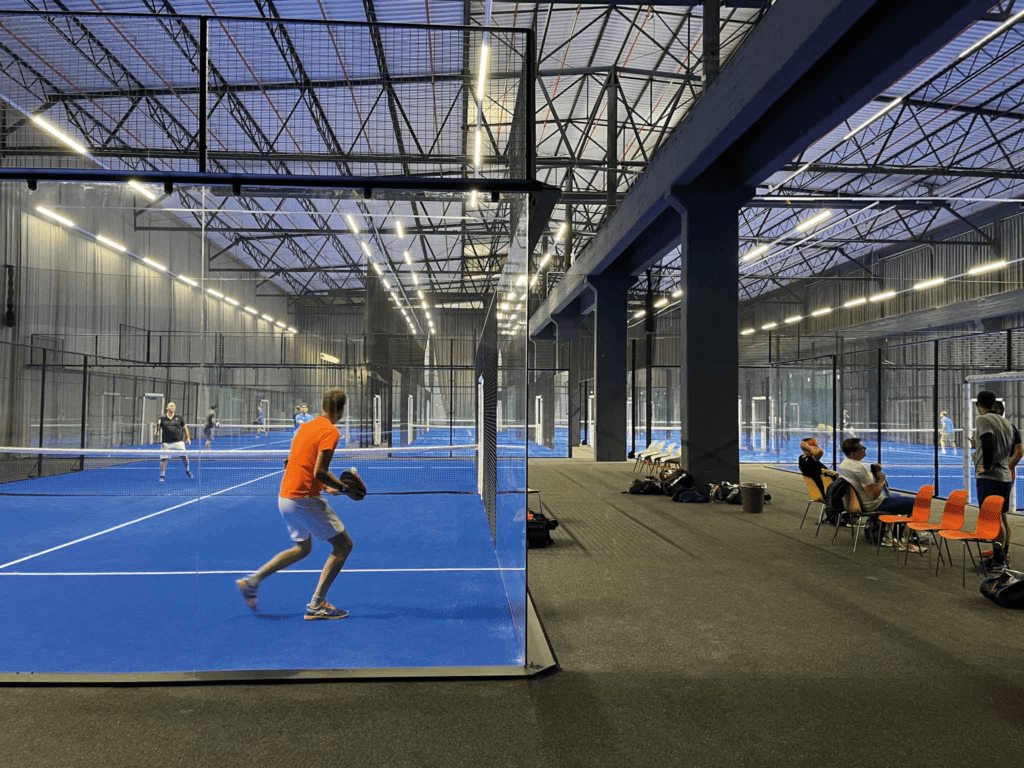Padel is one of the fastest-growing racket sports in the world, blending elements of tennis and squash. Unlike traditional tennis, padel courts are smaller and have specific structural requirements that make them unique. Understanding the dimensions and layout of a padel court is crucial, whether you’re planning to build one, play competitively, or simply want to enjoy a casual game with friends. In this guide, we’ll break down the padel court dimensions and explain the key aspects that define its layout.
Read more: Enjoy4Fun: Your Go-To for Free Online Games
1. Standard Padel Court Dimensions
A standard padel court is rectangular and measures 20 meters in length and 10 meters in width. These measurements apply to both singles and doubles matches, though padel is predominantly played in doubles. The entire court is surrounded by walls, typically made of glass or a combination of glass and metal mesh, which are integral to the game since the ball can bounce off them. Here’s a closer look at the primary dimensions:
- Length: 20 meters (65.6 feet)
- Width: 10 meters (32.8 feet)
- Wall height: The back wall is typically 3 meters (9.8 feet) high.
- Net height: The net is positioned in the center of the court, with a height of 88 cm (34.6 inches) at the center and 92 cm (36.2 inches) at the sides.

2. Court Layout and Structure
The Walls
The walls are a distinctive feature of padel courts, which separates padel from other racket sports. The back wall is generally 3 meters tall, and it extends the entire width of the court. The side walls are also part of the gameplay. The first 3 meters of the sidewalls are made of a solid material, while the remaining portion is often an open mesh or glass, ensuring good visibility for spectators and allowing airflow.
The Net
The court is divided into two equal halves by a net, which stands 88 cm at the center. This net is slightly higher at the sides (92 cm), providing a slight curve for better gameplay and control. Like in tennis, players must hit the ball over the net, but in padel, the surrounding walls and fencing add extra dynamics.

Service Boxes
On both sides of the net, there are service boxes, which are marked by parallel lines running 3 meters from the net. This is where players must stand to serve the ball. The serving area is divided into two equal halves, much like in tennis, and the player must serve diagonally.
The Fence
Surrounding the glass walls, metal fencing is used to contain the ball within the playing area. The top half of the side walls is often fenced, preventing the ball from going out of bounds during play. The height of the fence may vary but typically matches the height of the glass walls.
3. Playing Surface
The playing surface of a padel court is usually made of artificial turf or synthetic material. This surface is chosen to provide good traction for players and offer a balance between speed and comfort. The turf is often sand-filled to improve bounce and player safety, as it reduces the risk of slipping.

4. Padel Court Zones
A padel court is divided into different zones for serving and receiving. Understanding these zones can significantly impact your gameplay. Each half of the court has a service line (which runs parallel to the net), and behind it, the court is divided into two equal parts by a center line. These lines define the areas where serves must land and where players must stand during specific stages of the game.
5. Safety Standards and Guidelines
To ensure player safety and optimal gameplay, padel courts must meet certain standards. These include:
- Adequate padding on walls to prevent injuries when players come in contact with them.
- Non-slip surface to minimize accidents, especially during fast-paced matches.
- Proper lighting for both indoor and outdoor courts. For professional tournaments, lighting should be even and bright, preventing shadows from affecting play.
FAQs
1. What is the standard size of a padel court?
A standard padel court measures 20 meters in length and 10 meters in width. This size is used for both singles and doubles matches.
2. Can the ball hit the walls in padel?
Yes, the ball can bounce off the walls after hitting the ground. This is an essential part of the game and adds an extra dimension to the gameplay.
3. How high is the net on a padel court?
The net is 88 cm high at the center and 92 cm high at the sides.
4. What is the surface of a padel court made of?
Most padel courts have artificial turf or synthetic materials as their playing surface, often filled with sand to improve grip and bounce.


